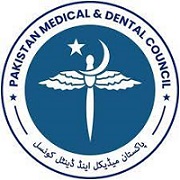CURRENT TRENDS IN BLOOD STREAM INFECTIONS-PATHOGENS AND THEIR ANTIMICROBIAL SUSCEPTIBILITY PATTERN
Abstract
Objectives: To identify the bacteria responsible for blood stream infections and evaluate the antibiotic susceptibility pattern of isolated bacteria in a tertiary care hospital.
Methods: It was a Prospective Cross-sectional study conducted in the Pathology Laboratory, Sharif Medical City Hospital, Lahore from January 2019 to December 2020. The blood samples received in Microbiology laboratory, Sharif Medical City hospital, were evaluated. The blood cultures were processed for identification of pathogens and their susceptibility. Two subcultures, on day 1 and day 5 were inoculated on Blood agar and MacConkey agar. Bacterial identification was established by gram staining, bench tests, and biochemical tests. API 20E was used for Enterobacteriaceae and API 20NE for non fermenting gram negative bacilli (NFGNB). The antimicrobial sensitivity testing of the causative bacteria was conducted, using commercially available discs, by Kirby Bauer disc diffusion assay and reported in accordance with Clinical & Laboratory Standards Institute (CLSI) 2019.
Results: Out of 754 blood cultures, 123 exhibited positive growth yielding 76(61.78%) gram negative rods, 43(34.95%) gram positive cocci while 4 (3.2%) Candida sp. Among gram positive cocci, the commonest bacterial pathogen is Staphylococcus aureus (51.1% ), followed by Enterococcus sp and CONS each constituting 18.6%, and Streptococcus sp consisting of 11.6%.These bacteria exhibited varying resistance to all drugs being 100% susceptible to Vancomycin and Linezolid. Among Gram negative pathogens, Pseudmonas aeruginosa constitutes 38.2%, followed by E. coli (25%), Acinetobacter 14.5%, Salmonella typhi (10.5%), and others. An alarmingly poor susceptibility was observed by Gram negative bacteria (GNB) against all the drugs. Only 21.4%, 35.7%, and upto 39.7% isolates were sensitive to Ampicillin and Co-amoxiclav and third generation cephalosporins respectively. Results for carbapenem sensitivity being around 56.6%-61.8% for imepenem and meropenem respectively.
Conclusion: The study reports inadequate effectiveness of commonly used drugs which are part of empiric regimes of our clinicians. Even the broad spectrum drugs like aminoglycosides and carbapenems which were considered last therapeutic resort previously haven’t proved to possess satisfactory antimicrobial activity against majority of bacteria.
Key words: Blood stream infections, Kirby Bauer disc diffusion assay, Enterobacteriaceae






